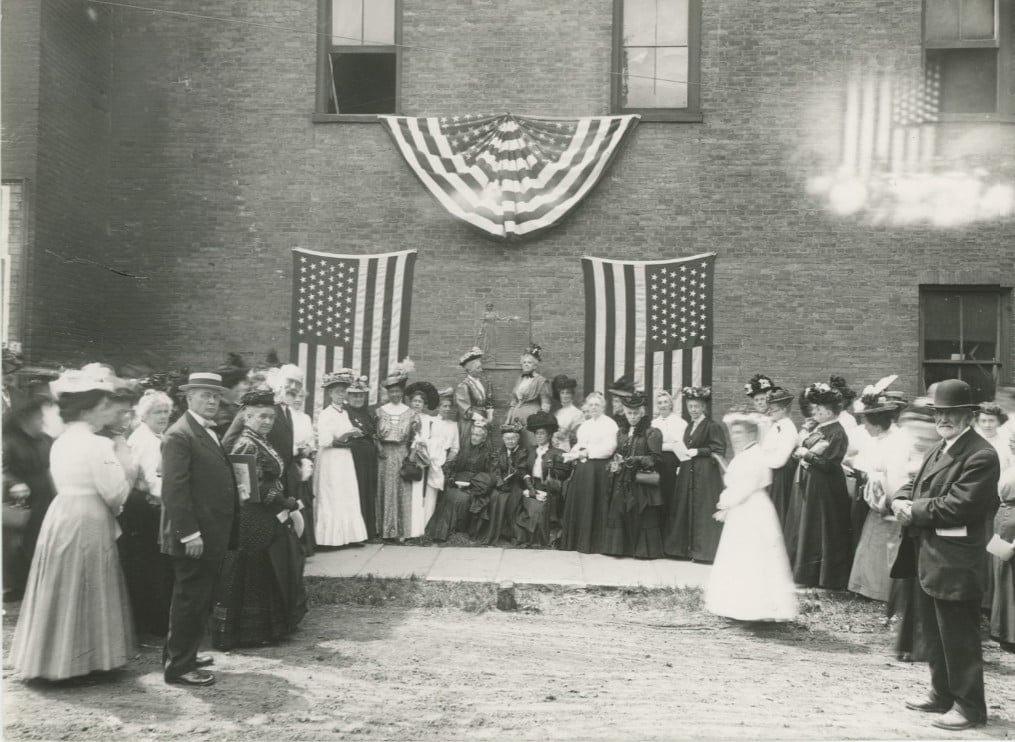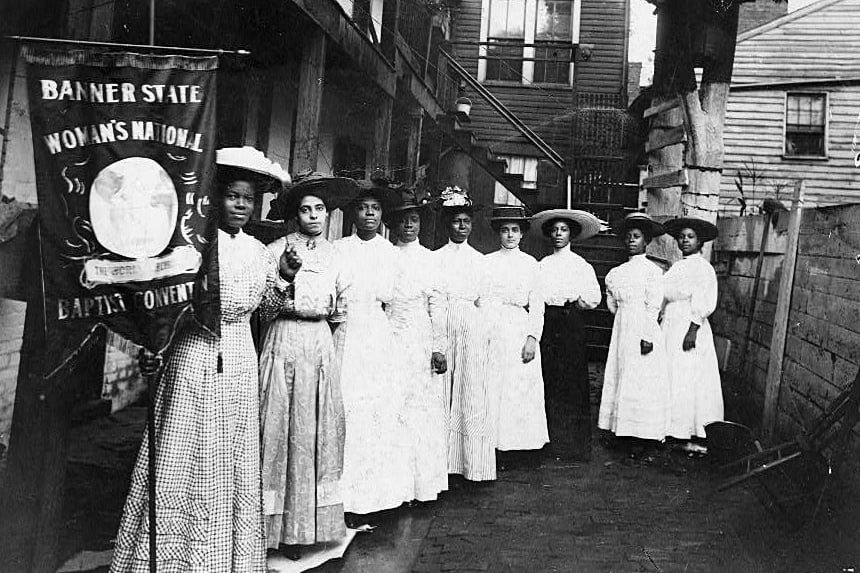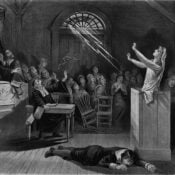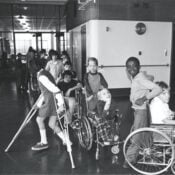In the summer of 1908, a small group gathered in Seneca Falls to mark the 60th anniversary of the women’s rights convention that had changed history. But while the founders like Elizabeth Cady Stanton, Susan B. Anthony, and Frederick Douglass were gone, the fight they began was far from over, especially for women of color who faced barriers far beyond the ballot box.

Mary Church Terrell, a prominent Black suffrage activist and the only Black woman in attendance, spoke at the anniversary event, primarily honoring Frederick Douglass’s support of women’s rights. But Terrell also praised Stanton for her role at Seneca Falls: “Try as hard as we may,” Terrell said, “it is difficult for women of the present day to imagine what courage and strength of mind it required for Elizabeth Cady Stanton to demand equal political rights for her sex at that time.”
Most American women did not yet have the vote in 1908 (women in Wyoming, Colorado, Utah, and Idaho were the exceptions), but the fight for women’s equal political rights had grown tremendously in the 60 years since Seneca Falls. Across the United States and its growing territories, women were organizing, writing, protesting, and demanding the vote. Women of color did so while confronting racism, xenophobia, and exclusion from the mainstream movement.

Black women were central to the fight for women’s suffrage, but not always recognized by white leaders. From the mid-19th century forward, women like Adella Hunt Logan, Frances Ellen Watkins Harper, Ida B. Wells-Barnett, and Mary Church Terrell, spoke, wrote, and organized through national clubs, churches, and community networks that mobilized thousands. These women knew that winning the vote would not be enough: it was just one step in larger efforts to confront racism, segregation, and systemic barriers to political power and equality.

In Hawaii, annexed by the United States in 1898, Wilhelmina Kekelaokalaninui Widemann Dowsett and Emma Ka’ilikapuolono Metcalf Beckley Nakuina worked to protect Native Hawaiian self-determination and advocated for women’s suffrage. Meanwhile, on the U.S. mainland, Chinese immigrant Mabel Ping-Hua Lee led suffrage parades in New York as a teen and spoke publicly about the need for full citizenship for Chinese Americans. When California granted suffrage to women, Tye Leong Schulze was the first Chinese American woman to vote in the state in 1912. Adelina Otero-Warren organized bilingual suffrage campaigns in New Mexico. Native American activists Marie Louise Bottineau Baldwin and Zitkala-Ša fought for indigenous rights and suffrage in a time when most Native Americans were barred from United States citizenship.

The fight for women’s suffrage reached its zenith with the ratification of the 19th Amendment on August 18, 1920: “The right of citizens of the United States to vote shall not be denied or abridged by the United States or by any State on account of sex. Congress shall have power to enforce this article by appropriate legislation.” More than a century after New Jersey women lost suffrage in 1807, and 72 years after Seneca Falls, the question of women’s right to vote seemed to be settled.
For white women, particularly those already embedded in civic and political life, it opened new doors. For many Black women and other women of color, however, voter suppression, intimidation, and legal exclusions remained an everyday reality.
In the years after the Civil War, southern states had created systems to prevent Black Americans from voting. If you could not afford to pay a poll tax, if your grandfather had not been able to vote, or if you could not pass a literacy test given to you by the registrar, you could not vote. After the 19th Amendment, these restrictions applied to Black women in the same way they had long been applied to Black men, as historian Martha S. Jones points out in Vanguard: How Black Women Broke Barriers, Won the Vote, and Insisted on Equality for All. Some northern and western states, such as Connecticut and Colorado, also used such restrictions. In theory, these mechanisms applied to all voters, but in practice, Black Americans were held to higher standards.
In 1923, the fight for women’s rights diverged once again. Alice Paul had become one of the most influential women in the fight for women’s suffrage. On the anniversary of Seneca Falls that summer, she announced her goal of a new constitutional amendment. The Equal Rights Amendment (ERA) that she envisioned would ensure equality for men and women under the Constitution. While many white women saw it as a logical next step, many Black women, indigenous women, Asian American women, and Latinx women, faced more immediate struggles because of their race, rather than their gender..

These women kept organizing. They launched voter education drives, fought legal battles, and challenged state laws that denied them access to the polls. Milagros Benet de Mewton pushed for women’s suffrage in Puerto Rico in the 1920s. Native American women and all Native Americans born in the United States received citizenship in the 1924 Indian Citizenship Act, but voting rights also remained elusive: Native Americans living on reservations in New Mexico could not vote until 1948 when a court decision guaranteed that right, and the same was true in Utah until 1957, when a restrictive law was overturned there. In 1955, Lucy Nicolar Poolaw, a Penobscot woman who lived on a reservation in Maine, became the first woman allowed to vote on a reservation in that state. In the 1950s, Septima Clark developed citizenship schools to help African Americans pass the literacy tests, and they quickly expanded throughout the South.

By the early 1960s, Clark’s citizenship schools had become part of the larger civil rights movement flourishing across the South. Spurred by decades of grassroots activism from women like Clark, as well as Ella Baker, Fannie Lou Hamer, and a new, young generation that included Diane Nash, the civil rights movement helped lead to the Voting Rights Act of 1965, a crucial turning point in Black women’s right to vote. The Voting Rights Act banned literacy tests and it gave the federal government the power to enforce voting protections. Its effect was immediate: After the law was enacted on August 6, 1965, 250,000 Black Americans became registered voters by the end of that year.

This month’s anniversaries of the Seneca Falls Convention and the Voting Rights Act – 177 and 60 years, respectively – underscore what Mary Church Terrell once described as the “courage and strength of mind” required to demand equal rights. The women who carried that struggle forward, across generations and in the face of unequal conditions, reshaped American democracy.
Become a Saturday Evening Post member and enjoy unlimited access. Subscribe now



